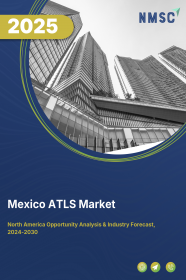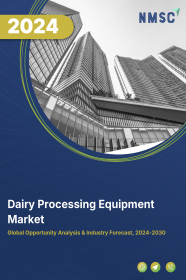
Mexico Automated Truck/Trailer Loading System Market by Type (Ground-Based and Overhead), by Automation (Semi-Automatic and Fully Automatic), by Load Type (Fluid Loads, Containers, Totes, Pallets, and Wheeled Carts/Cages), by Truck/Trailer Type (Non-Modified and Modified) and Others –Opportunity Analysis and Industry Forecast, 2024–2030
Industry: Construction & Manufacturing | Publish Date: 15-Feb-2025 | No of Pages: 126 | No. of Tables: 92 | No. of Figures: 57 | Format: PDF | Report Code : CM1683
Market Definition
The Mexico ATLS Market size was valued at USD 18.0 million in 2023, and is predicted to reach USD 42.6 million by 2030, at a CAGR of 13.1% from 2024 to 2030.
An Automated Truck/Trailer Loading System (ATLS) represents a technology-driven solution for material handling, aimed at automating tasks associated with truck and trailer loading and unloading. Typically, ATLS consists of a conveyor system, loading dock, and control system. The conveyor system transports pallets or containers to the loading dock, where the control system manages the loading or unloading process. The principal goal of ATLS is to streamline and optimize logistics and supply chain operations by automating manual tasks involved in handling goods during loading and unloading, thereby improving efficiency, safety, and productivity within warehouse and distribution center environments.
ATLS utilizes a blend of mechanical, conveyor, sensor, and control technologies to efficiently and accurately handle various types of cargo, including individual boxes, containers, pallets, and bulk goods. These systems seamlessly integrate into loading docks, warehouses, and distribution centers, significantly contributing to operational efficiency gains, increased throughput, and enhanced safety by reducing the reliance on manual labour in the loading process. Moreover, these solutions can be customized to meet the specific needs of different industries, cargo types, and existing infrastructure, ensuring adaptability and efficiency enhancements across diverse logistical scenarios.
Increasing Safety Enhancement Drives the Market Growth
Safety improvement plays a pivotal role in driving the Automated Truck/Trailer Loading System Market. These systems are equipped with state-of-the-art sensors, cameras, and algorithms designed to ensure safety during loading operations. Advanced sensors integrated into the systems detect obstacles, objects, or personnel in the loading area in real-time, allowing the system to adjust operations to prevent collisions or accidents.
Additionally, cameras complement these sensors by providing a visual feed of the loading process, enabling remote monitoring and facilitating prompt identification of potential safety hazards by operators. Moreover, sophisticated algorithms optimize loading sequences, ensuring even weight distribution and preventing overloading, thus minimizing the risk of accidents or goods damage.
By prioritizing safety through these features, automated loading systems create a safer working environment for personnel and decrease the likelihood of cargo damage during transit. Consequently, safety enhancement emerges as a primary driver accelerating the adoption of automated loading systems, aligning with companies' objectives to prioritize employee well-being and cargo integrity.
The Rising Acceptance of Automation in Warehouses Boosts the ATLS Market
The widespread incorporation of automated solutions in warehouses and the logistics sector is driving the growth and advancement of the ATLS industry in the Mexico.
This adoption aligns seamlessly with ATLS technology, as businesses strive for comprehensive automation in their logistics and supply chain activities. Integrating ATLS with existing automation setups such as conveyor systems and robotic material handling significantly enhances operational efficiency.
High Initial Costs Restraint the Market Growth
Many organizations face significant hurdles when considering the adoption of ATLS, largely due to the substantial upfront expenses involved. This factor acts as a constraint on market growth. The initial costs include acquiring technology, investing in infrastructure, addressing customization and integration expenses, providing workforce training, engaging consulting services, and evaluating scalability options.
The Integration of Advanced Technologies Creates Opportunities for the Market
Integrating artificial intelligence (AI), the Internet of Things (IoT), and predictive maintenance into ATLS is positioned to unlock significant growth opportunities for the market in the foreseeable future. AI dynamically enhances loading and unloading operations in real-time by utilizing IoT data, thereby enhancing overall efficiency levels.
Predictive Maintenance reduces downtime and unexpected repair costs while also enhancing safety through IoT monitoring and AI-driven risk identification, ultimately reducing liability expenses.
This integration provides valuable data insights crucial for informed decision-making, offers customization and scalability options, and appeals to industries seeking innovative solutions. Consequently, these factors collectively pave the way for opportunities for market expansion.
Competitive Landscape
The Mexico ATLS market comprises various market players, such as Bastian Solutions, LLC, Beumer Group GmbH & Co. KG, ARi, Mecalux, S.A., Joloda Hydraroll Limited, Virans, Actiw Ltd., Motion Industries, Inc., Interroll Group, Vanderlande Industries B.V., and others.
Mexico ATLS Market Key Segments
By Type
-
Ground-Based
-
Overhead
By Automation
-
Semi-automatic
-
Fully Automatic
By Load Type
-
Fluid Loads
-
Containers
-
Totes
-
Pallets
-
Wheeled Carts/Cages
By Truck/Trailer Type
-
Non-modified
-
Modified
By Loading System
-
Chain Conveyor System
-
Slat Conveyor System
-
Belt Conveyor System
-
Skate Conveyor System
-
Roller Track System
-
Loading Plate System
-
Others
By Industry Vertical
-
Aviation
-
Cement
-
Paper
-
FMCG
-
Post & Parcel
-
Automotive
-
Textile
-
Pharmaceutical
REPORT SCOPE AND SEGMENTATION:
|
Parameters |
Details |
|
Market Size in 2023 |
USD 18.0 Million |
|
Revenue Forecast in 2030 |
USD 42.6 Million |
|
Growth Rate |
CAGR of 13.1% from 2024 to 2030 |
|
Analysis Period |
2023–2030 |
|
Base Year Considered |
2023 |
|
Forecast Period |
2024–2030 |
|
Market Size Estimation |
Million (USD) |
|
Growth Factors |
|
|
Companies Profiled |
10 |
|
Market Share |
Available for 10 companies |
|
Customization Scope |
Free customization (equivalent up to 80 working hours of analysts) after purchase. Addition or alteration to country, regional, and segment scope. |
|
Pricing and Purchase Options |
Avail customized purchase options to meet your exact research needs. |
KEY PLAYERS
-
Bastian Solutions, LLC
-
Beumer Group GmbH & Co. KG
-
ARi
-
Mecalux, S.A.
-
Joloda Hydraroll Limited
-
Virans
-
Actiw Ltd.
-
Motion Industries, Inc.
-
Interroll Group
-
Vanderlande Industries B.V.

















 Speak to Our Analyst
Speak to Our Analyst




















